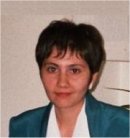|
Plenary Lecture
Computational Methods and
Analytical Study for Detecting the Attractors of a Particular Type of
k-Order, Nonlinear, Exchange Rate Models

Professor Mirela Voicu
Department of Economic Informatics
Faculty of Economics and Business Administration
West University of Timisoara
Romania
E-mail: mirelavoicu@yahoo.fr
Abstract: In this paper we present
some qualitative and quantitative results for a particular type of exchange
rate evolution models, described by k-order nonlinear, discrete and
determinist dynamical systems, where k is greater than or equal to 2. These
results concern the existence of attractors: the fixed point, its stability
and its attraction domain, period-p cycles (where p is greater than or equal
to 2), limit cycles and chaotic attractors.
With analytical tools we detect:
- the existence and the unicity of the fixed point, its stability and, for
certain parameters values, its attraction domain;
- the values of parameters for which these systems have period 2-cycles and
the form of these orbits;
- the relation between the cycles of period p, corresponding to systems of
different k-orders.
Given the nonlinear nature of these systems, the chaotic dynamics is their
most complex type of behavior. We cannot detect this type of behavior using
only analytical tools. For this reason, in order to detect the dynamics of
the system, we will use numerical simulations.
In our numerical simulations, we will consider the following cases:
- firstly, we present numerical studies for a particular case of the second
order system – here we present chaotic attractors and sequences of
period-doubling bifurcations.
- for the same values of parameters as in the case of the second order
system, we make the numerical study for the third order system – here, we
can observe a similarity between the images of chaotic attractors for each
aforementioned order of the systems.
Our study focuses on attractors. It is known that the Lyapunov exponents are
a tool used to establish the type of behavior in nonlinear dynamics. We have
also calculated their values. In this paper, we present an implementation
method used in order to calculate the Lyapunov exponents. We present the
implementation for the system of the second order. This implementation
method can be used for any nonlinear, determinist, discrete system and for
any order of the system. The algorithm implementation is made using VBA
(Visual Basic for Applications) program in Excel, and the images of the
figures in this paper are made using Mathematica. This method presents a way
in which we can obtain a very large number of observations with the
computer, in a very short time, which is conclusive for the obtained
results.
In our computational study we also are concentrated on some objectives: to
determine the behavior type for certain cases; to obtain images for
attractors; to calculate the Lyapunov exponents and finally, to obtain
animation. In order to obtain animation we can use different applications.
We present such an animation obtained in Flash.
Brief Biography of the Speaker:
Mirela-Catrinel Voicu was born in Romania, in 1972. In 1995, she graduated
from the Faculty of Mathematics and Computer Sciences, West University of
Timisoara. She received the MSc degree in Applied Mathematics, Informatics
in Economy and Computer Sciences from the West University of Timisoara. She
followed a training course for PhD thesis at the National Institute for
Statistics and Economic Studies, Paris, France. She received her PhD in 2001
from the University of Timisoara, Romania (with the “Cum laude” distinction)
and from the University of Paris 13, France (with the “Tres honorable avec
felicitations“ distinction). Currently she is Professor of the Department of
Economic Informatics, within the Faculty of Economics and Business
Administration, West University of Timisoara, Romania, where, since 1995,
she has held several academic positions. Her activity includes Programming
and Internet Programming, Informatics in Economy, Databases, OOP, Data
structures. Through the collaboration program between the Faculty of
Economics and Business Administration and the Faculty of Mathematics and
Informatics of the West University, she has held classes with international
participation, in postgraduate education, in the section of “Mathematic
Modeling in economics and applied sciences” – Exchange Rate Evolution Models
– subject introduced within the program due to the original contributions in
she’s PhD. During the collaboration between the Faculty of Economics and
Business Administration, West University of Timisoara and CUOA – Italy, she
has taught in postgraduate university, “The Management of Business and
Public Administration”, the subject, Internet. She has 65 papers in
conference proceedings or refereed journals (from these papers, 15 have been
presented or published abroad). She has published 7 books (1 book in France
and 6 books in Romania). She is a reviewer and a member in international
program committee of various WSEAS conferences from abroad, member in the
teams of 9 research projects (one of which is international) and project
manager for one research project. Since 2002, she is a member of INFOREC
(Romanian Association for Economic Informatics Training Promotion) and since
2005 is a member of WSEAS (World Scientific And Engineering Academy And
Society).
|